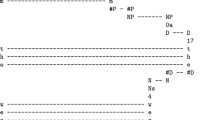
Overview
Part of the book series: The Springer International Series in Engineering and Computer Science (SECS, volume 5)
Access this book
Tax calculation will be finalised at checkout
Other ways to access
About this book
Similar content being viewed by others
Keywords
Table of contents (9 chapters)
-
Front Matter
-
Back Matter
Authors and Affiliations
Bibliographic Information
Book Title: Perceptual Organization and Visual Recognition
Authors: David G. Lowe
Series Title: The Springer International Series in Engineering and Computer Science
DOI: https://doi.org/10.1007/978-1-4613-2551-2
Publisher: Springer New York, NY
-
eBook Packages: Springer Book Archive
Copyright Information: Kluwer Academic Publishers 1985
Hardcover ISBN: 978-0-89838-172-6Published: 30 June 1985
Softcover ISBN: 978-1-4612-9604-1Published: 30 September 2011
eBook ISBN: 978-1-4613-2551-2Published: 06 December 2012
Series ISSN: 0893-3405
Edition Number: 1
Number of Pages: XII, 162
Topics: Computer Imaging, Vision, Pattern Recognition and Graphics, Artificial Intelligence



